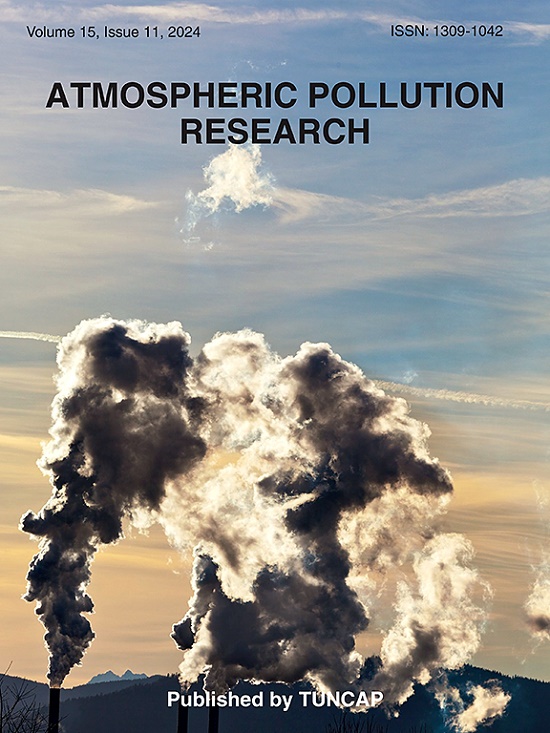Meteorological and climatological conditions supportive for windblown dust formation in Poland
IF 3.9
3区 环境科学与生态学
Q2 ENVIRONMENTAL SCIENCES
引用次数: 0
Abstract
Windblown dust is considered a type of severe weather phenomena, causing low horizontal visibility, high particulate matter concentrations and economic loss. Although dust events mostly occur in arid and semiarid climates, they are also being reported in Poland during dry spells. Currently there are no comprehensive studies releted to windblown dust climatology of Poland, despite their abundance in the recent years. In order to identify significant windblown dust events in Poland, compiled data from meteorological stations, air quality stations and media/social media platforms was used. Hourly observations from 50 Polish meteorological stations were obtained in order to gather all windblown dust related reports. Hourly mean PM10 concentrations were obtained in order to estimate the impact of windblown dust on air quality as well as to identify cases away from meteorological stations. Lastly, media and social media reports, depicting intense windblown dust, were included in the study in order to make the database more detailed. A total of 65 days with a windblown dust were identified for a period between 2001 and 2022. Each case was examined based on a type of a meteorological disturbance causing it (synoptic or convective).
Meteorological conditions present during windblown dust cases, including near-surface relative humidity, wind speed and visibility were also analyzed along with surface soil moisture and Standarized Precipitation Evapotranspiration Index (SPEI). Additionaly, atmospheric soundings and vertical tropospheric relative humidity profiles were simulated for convective windblown dust cases, based on ECMWF ERA5 Reanalysis. It was found that central and western regions of Poland are most prone to windblown dust, with April being by far the most active month for dust activity. Significant differences were also noted between the intensity of recorded windblown dust occurrences, with most cases being local and lasting less than 1 h to some covering large area of a Country and lasting for over 10 h. Recorded convective windblown dust most commonly formed as a result of thunderstorm's outflow, connected to cold fronts and low tropospheric convergence zones. High Lifted Condensation Level and low humidity in the lower troposphere strongly supported this type of events.
支持波兰风沙形成的气象和气候条件
风尘被认为是一种恶劣天气现象,造成水平能见度低、颗粒物浓度高和经济损失。虽然沙尘事件主要发生在干旱和半干旱气候,但在波兰也有报道称,沙尘事件发生在干旱期。尽管近年来波兰风沙气候学研究丰富,但目前还没有全面的研究。为了确定波兰的重大风尘事件,使用了来自气象站、空气质量站和媒体/社交媒体平台的汇编数据。从50个波兰气象站获得每小时的观测资料,以便收集所有与风沙有关的报告。获取每小时平均PM10浓度是为了估计风吹粉尘对空气质量的影响,并确定远离气象站的病例。最后,为了使数据库更加详细,研究中包括了媒体和社交媒体报道,这些报道描绘了强烈的风吹尘埃。在2001年至2022年期间,共发现了65天的风沙天气。每个案例都是根据引起它的气象干扰类型(天气或对流)进行检查的。分析了风沙天气期间的气象条件,包括近地面相对湿度、风速和能见度,以及地表土壤湿度和标准化降水蒸散指数(SPEI)。此外,基于ECMWF ERA5 Reanalysis,模拟了对流风沙的大气探测和垂直对流层相对湿度廓线。研究发现,波兰中部和西部地区最容易受到风沙的影响,4月是迄今为止风沙活动最活跃的月份。记录到的风吹沙尘强度之间也存在显著差异,大多数情况是局部的,持续时间不到1小时,有些覆盖一个国家的大片地区,持续时间超过10小时。记录到的对流风吹沙尘最常见的形成是雷暴流出的结果,与冷锋和对流层低层辐合带有关。对流层下层的高抬升凝结层和低湿度强烈支持了这类事件。
本文章由计算机程序翻译,如有差异,请以英文原文为准。
求助全文
约1分钟内获得全文
求助全文
来源期刊

Atmospheric Pollution Research
ENVIRONMENTAL SCIENCES-
CiteScore
8.30
自引率
6.70%
发文量
256
审稿时长
36 days
期刊介绍:
Atmospheric Pollution Research (APR) is an international journal designed for the publication of articles on air pollution. Papers should present novel experimental results, theory and modeling of air pollution on local, regional, or global scales. Areas covered are research on inorganic, organic, and persistent organic air pollutants, air quality monitoring, air quality management, atmospheric dispersion and transport, air-surface (soil, water, and vegetation) exchange of pollutants, dry and wet deposition, indoor air quality, exposure assessment, health effects, satellite measurements, natural emissions, atmospheric chemistry, greenhouse gases, and effects on climate change.
 求助内容:
求助内容: 应助结果提醒方式:
应助结果提醒方式:


